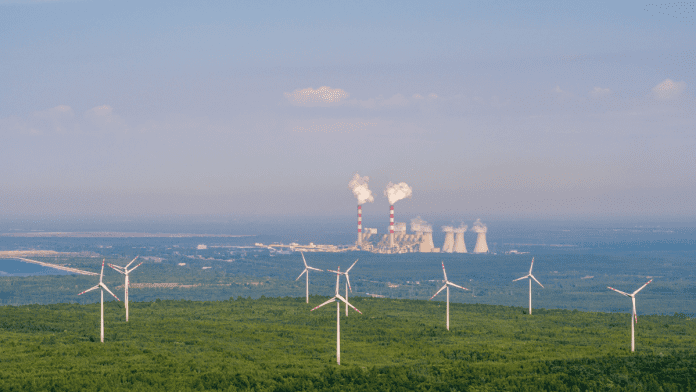🕒 Last updated on July 24, 2025
Poland Reaches a Clean Energy Milestone
In June, Poland achieved a major breakthrough. For the first time, the country generated more electricity from clean energy sources than from coal. This marks a historic shift for a nation long known for its heavy reliance on coal.
According to new data, 44.1% of Poland’s electricity came from renewable sources in June. Meanwhile, coal’s share fell slightly to 43.7%. The remainder of the energy mix came from natural gas. This is the first time coal dropped below half of the total electricity supply for a full quarter. In the second quarter of this year, coal provided only 46.2% of Poland’s electricity—a sharp drop from 56.4% during the same period last year.
This change is especially important because Poland is still one of the most coal-dependent countries in the European Union. Approximately 60% of the nation’s electricity still originates from coal as of 2024. But with the latest numbers, Poland is now moving steadily toward cleaner sources of power.
Government Pushes for Energy Diversity
The recent rise in clean energy use didn’t happen by chance. The Polish government has been attempting to lessen its reliance on coal. It has launched many new projects, including large offshore wind farms and the country’s first nuclear power plant. The nuclear plant will be built with help from companies based in the United States and is expected to start working by 2036.
The government also announced a massive investment this week. It approved a 10.8 billion zlotys (or $3 billion) plan to build 5,000 kilometers of new high-voltage power lines over the next ten years. These new lines will help carry electricity more efficiently across the country. The money will come from European Union pandemic recovery funds that were recently released after a political change in late 2023.
This investment in Poland’s power system shows a strong move away from coal and toward cleaner energy options. The transmission upgrade is a crucial part of making sure Poland can use more solar and wind energy in the future.
Solar Power Leads the Clean Energy Surge
Most of Poland’s clean energy in June came from wind and solar power. Solar energy, in particular, has grown rapidly. Poland now has 23 gigawatts of installed solar capacity. That’s more than three times the 2030 target that the government set just a few years ago.
The solar boom began during the previous government’s term. After Russia’s full-scale invasion of Ukraine, energy prices shot up. In response, Poland expanded a program that gives money to households that install rooftop solar panels. This helped many families switch to solar power and reduce their bills.
China’s solar meltdown deepens as U.S. tariffs trigger mass exodus to Africa, Middle East
However, this fast growth also brought some problems. Poland’s electricity grid is old and not well-prepared to handle large amounts of solar energy. As a result, some clean energy goes to waste because the system can’t store or send it where it’s needed. Coal plants, which are already in place and connected to the grid, still benefit from these gaps in the system.
Wind Energy Sees Progress and Pushback
Wind power is also playing a bigger role in Poland’s energy mix. Several big wind farms are being built along the Baltic Sea coast. However, wind power, especially on land, still faces political and legal challenges.
In June, the Polish parliament passed a law to loosen rules about how close wind farms can be to homes. This change reversed an older policy that made it very hard to build new wind turbines. But not everyone supported the new law.
The country’s president criticized the way the new wind law was linked to another bill about electricity prices. He said the government was trying to force his hand with the combined bill. His chosen successor, who takes office next month, is also known for opposing onshore wind projects during his campaign.
Despite these tensions, the numbers show that clean energy is starting to take over. June’s results prove that Poland can reduce its use of coal and still keep the lights on. The country is now one step closer to building a cleaner, more modern energy system.

